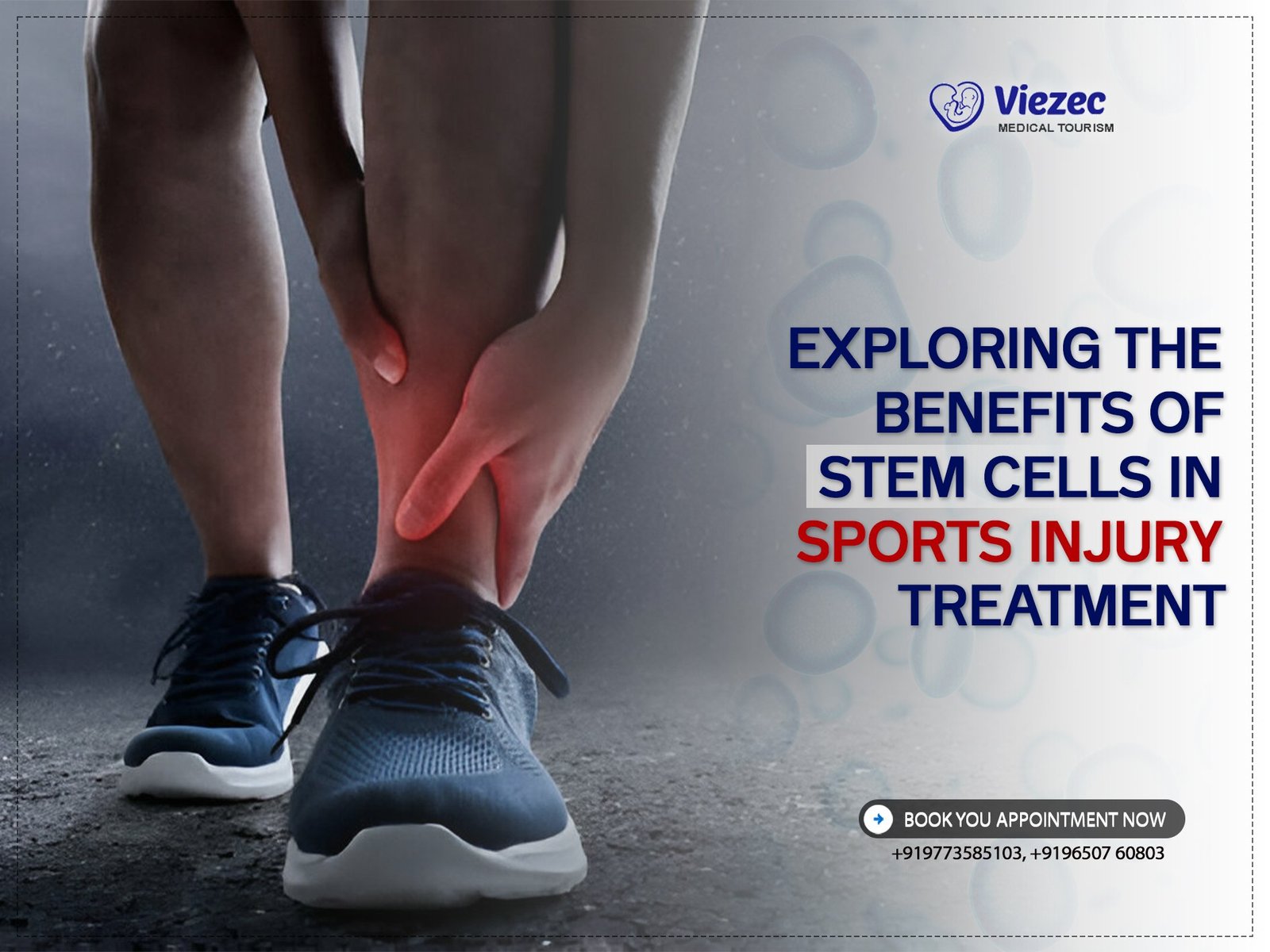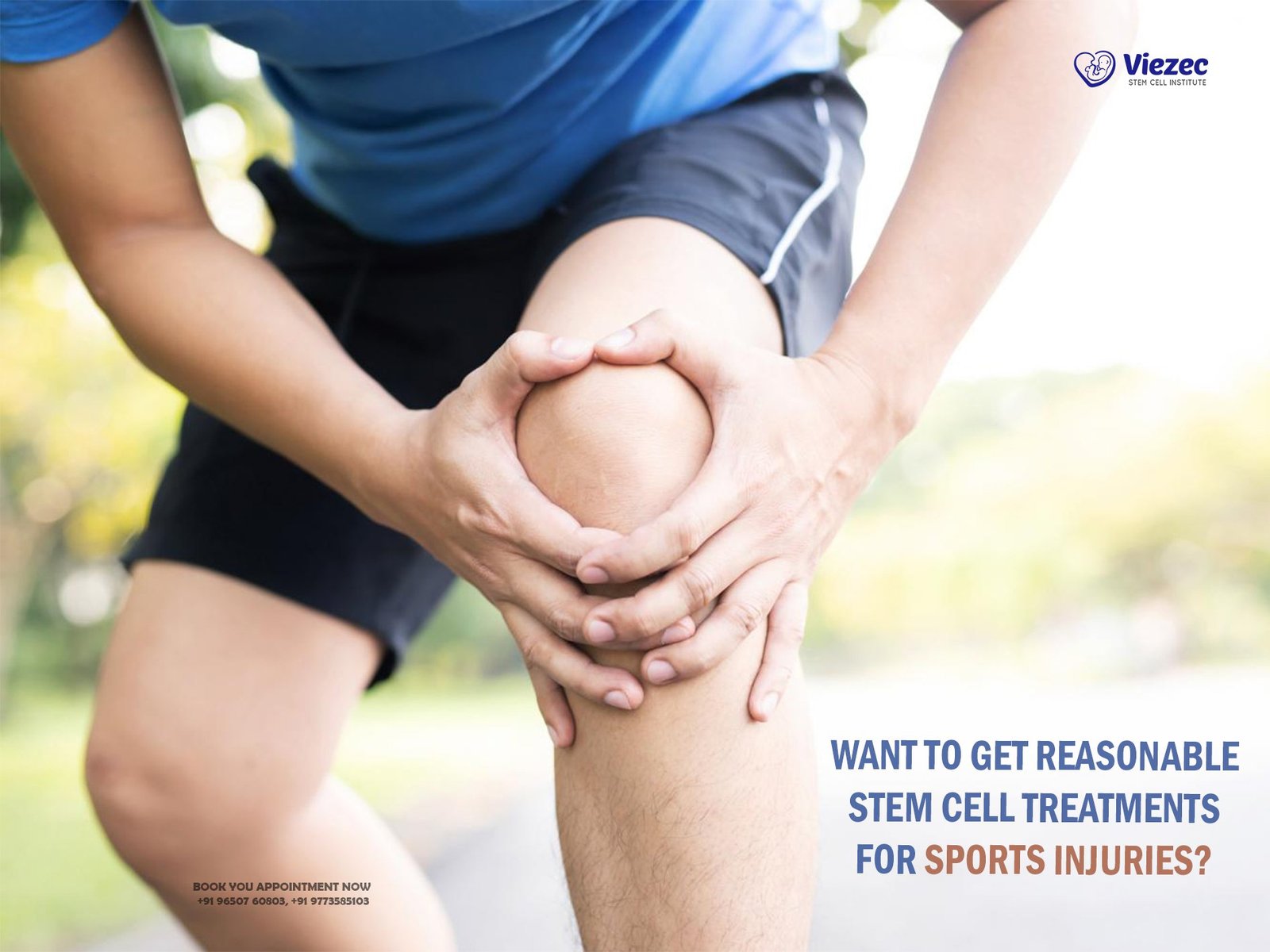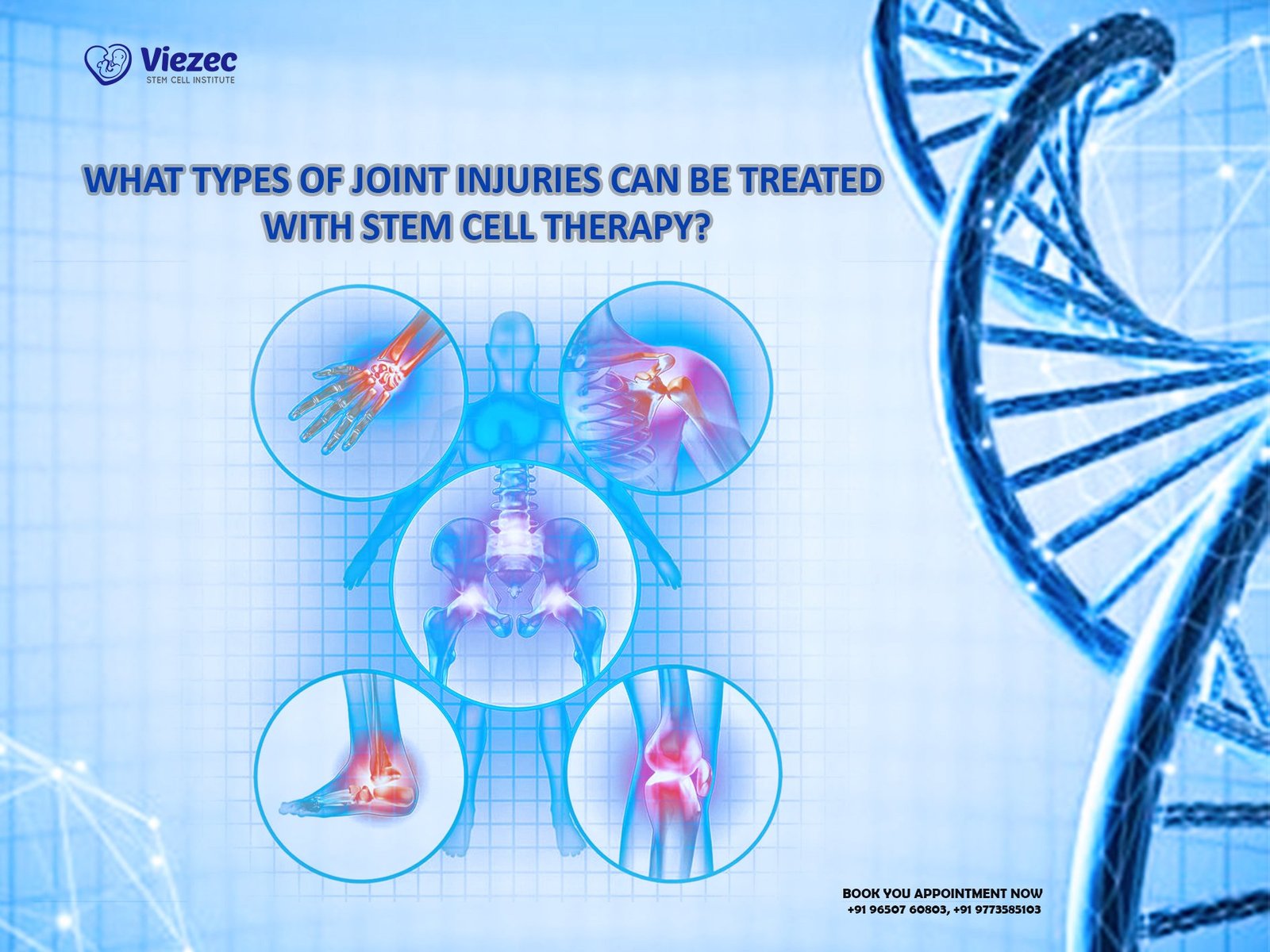Stem cell therapy is rapidly transforming the landscape of sports medicine. As athletes face increasing pressure to recover faster and perform longer, regenerative treatments offer a revolutionary solution that goes beyond traditional methods. This article explores how stem cells—especially mesenchymal stem cells (MSCs)—play a critical role in healing common sports injuries such as tendon tears, ligament sprains, cartilage damage, and early joint degeneration.
From accelerating recovery to reducing inflammation and even helping athletes avoid surgery, stem cell therapy is redefining what’s possible in injury rehabilitation. The article also dives into real-world success stories, scientific insights, future trends, and the ethical considerations surrounding this cutting-edge approach. Whether you’re a professional athlete or an active individual seeking smarter recovery options, this guide provides a clear, engaging look at how stem cells are helping people get back in the game—faster and stronger than ever before.
Introduction to Stem Cell Therapy
What Are Stem Cells and How Do They Work?
Stem cells are the body’s natural repair system—undifferentiated cells with the unique ability to develop into specialized cells like muscle, bone, cartilage, or tendon. Think of them as biological building blocks. When an injury occurs, especially in muscles or joints, stem cells can be directed to transform into the needed tissue type and aid in the repair and regeneration process.
What makes stem cells especially valuable is their self-renewing nature. They don’t just replace damaged tissue—they also release signaling molecules that stimulate nearby cells, reduce inflammation, and improve overall healing. This regenerative power is what sets them apart in the world of sports medicine.
A New Era in Sports Medicine: The Rise of Regenerative Therapy
We’re standing on the edge of a medical revolution in athletics. Regenerative therapy—led by innovations in stem cell science—is changing how we approach sports injuries. Instead of merely managing symptoms with painkillers or waiting through long recoveries after surgery, athletes now have access to treatments that actually repair the root of the injury.
This shift from traditional to regenerative medicine means quicker recovery, fewer relapses, and in many cases, a non-surgical path back to peak performance. It’s no longer science fiction—it’s becoming standard practice in elite sports circles and is steadily making its way into broader athletic communities.
Understanding Sports Injuries
Common Sports Injuries That Stem Cell Therapy Can Treat
From weekend warriors to elite athletes, injuries are part of the game. Stem cell therapy is showing impressive results in treating many common sports-related injuries, particularly those involving soft tissues and joints. Some of the most commonly treated conditions include:
-
Tendon injuries (like Achilles tendinitis or rotator cuff tears)
-
Ligament sprains (such as ACL or MCL tears)
-
Muscle strains and tears
-
Joint injuries (including meniscus or labrum tears)
-
Early to moderate osteoarthritis
-
Cartilage damage (especially in the knee, shoulder, and hip)
Research continues to expand, but existing clinical evidence supports the use of stem cells to promote healing, reduce inflammation, and regenerate damaged tissues in these areas. For athletes, this can mean faster recovery and potentially avoiding surgery altogether.
Traditional vs. Regenerative Treatment: What’s the Difference?
Traditional sports injury treatments typically rely on a mix of rest, physical therapy, pain management (like NSAIDs or corticosteroid injections), and in more severe cases, surgery. While these methods can be effective, they often treat symptoms more than the underlying issue. Healing can be slow, and some interventions—like steroids or surgery—may come with long-term consequences.
Regenerative therapy flips that script. Instead of simply masking pain or removing damaged tissue, stem cell therapy works by encouraging the body to repair itself. The treatment helps restore the structural integrity of injured tissue while supporting natural, biological healing.
Think of it this way: traditional treatments are like patching a tire; regenerative therapy is like regrowing the rubber from the inside out.
Science Behind Stem Cells in Healing
How Stem Cells Accelerate Recovery in Athletes
When stem cells are injected into an injury site, they don’t just sit there—they get to work. These cells begin to differentiate, meaning they transform into the specific types of cells the body needs to heal (like cartilage, bone, or tendon). But that’s just part of the magic.
Stem cells also release growth factors and signaling proteins that jumpstart the body’s natural healing process. They recruit other cells to the injury site, stimulate the formation of new blood vessels (angiogenesis), and enhance tissue remodeling. The result? Accelerated healing, reduced downtime, and a stronger recovery.
For athletes, this means getting back to training and competition faster, often with a reduced risk of re-injury.
The Role of Stem Cells in Reducing Inflammation and Pain
One of the most immediate and noticeable benefits of stem cell therapy is its anti-inflammatory effect. Unlike pain medications that simply dull symptoms, stem cells target the source of inflammation.
They release cytokines—natural chemical messengers—that modulate the immune response and calm inflamed tissue. This helps reduce swelling, relieve pain, and improve range of motion, all without the side effects associated with steroids or opioids.
Athletes often report feeling relief within days or weeks after treatment, with long-term improvement continuing as the tissue regenerates.
Mesenchymal Stem Cells (MSCs): The MVPs of Injury Recovery
Among the many types of stem cells, mesenchymal stem cells (MSCs) are the true MVPs when it comes to treating sports injuries. Sourced from bone marrow, fat tissue, or umbilical cord blood, MSCs are prized for their versatility and healing potential.
What makes MSCs so effective?
They differentiate easily into musculoskeletal tissues
They modulate immune responses and reduce inflammation
They secrete bioactive molecules that promote repair
Because of their safety profile and regenerative capacity, MSCs are widely used in clinical settings and continue to be the focus of ongoing research and innovation.
Real-World Applications in Sports
Professional Athletes Who Have Used Stem Cell Therapy
Stem cell therapy isn’t just a futuristic concept—it’s already making waves in professional sports. A growing number of elite athletes have turned to regenerative treatments to recover faster, avoid surgery, and extend their careers. Some standout examples include:
-
Rafael Nadal (Tennis): Struggled with chronic knee issues and received stem cell treatment to regenerate cartilage and reduce inflammation.
-
Peyton Manning (NFL): Reportedly sought stem cell therapy abroad for a neck injury that threatened to end his career.
-
Tiger Woods (Golf): Underwent stem cell therapy to aid in recovery from repeated back surgeries.
These athletes have access to the best medical care in the world—and their choice to pursue stem cell therapy reflects growing confidence in its effectiveness.
Breakthrough Success Stories from the Field and Court
Beyond the big names, countless athletes at all levels—from college to recreational—are experiencing remarkable results with stem cell therapy.
Take the example of a semi-professional soccer player recovering from a partial ACL tear. Instead of undergoing months-long rehab post-surgery, they opted for stem cell injections combined with targeted physical therapy. Within weeks, inflammation was down, mobility returned, and they were back on the field months ahead of schedule.
Stories like these are becoming more common as access to regenerative medicine expands. What used to be considered experimental is now helping real people return to the game stronger and sooner than expected.
Benefits of Stem Cell Therapy in Sports Injuries
Faster Recovery Times and Improved Performance
One of the most appealing benefits of stem cell therapy for athletes is speed—not just on the field, but in recovery. By actively repairing damaged tissues, stem cells shorten the healing timeline compared to traditional approaches.
Instead of months in a brace or on crutches, many athletes are returning to training weeks sooner. This faster turnaround not only improves physical recovery but also helps maintain mental sharpness, conditioning, and momentum—critical components of peak performance.
And it’s not just about returning to play. In many cases, athletes report that the treated area feels stronger or more stable than it did before the injury, which can translate to improved on-field performance.
Avoiding Surgery: A Game-Changer for Many Athletes
Surgery has long been the go-to solution for serious injuries—but it comes with risks: infections, long recovery periods, scar tissue, and even long-term complications. For many athletes, going under the knife means putting their season—or even their career—on hold.
Stem cell therapy offers a powerful alternative. By promoting natural tissue regeneration, it can eliminate the need for surgery in certain cases, especially for partial tears, early cartilage damage, or chronic tendonitis.
Imagine avoiding an ACL reconstruction and its 6–9 month recovery, and instead using a targeted stem cell protocol to get back in the game in half the time—with your own tissue doing the healing. That’s the kind of shift regenerative medicine is creating.
Long-Term Joint and Tissue Health
One of the biggest concerns for athletes is long-term damage—will today’s injury turn into tomorrow’s chronic pain? Stem cells may help change that narrative.
Because they don’t just treat symptoms but restore function and structure, stem cell therapies can slow or even reverse degenerative changes like early arthritis. This proactive healing may reduce the need for future procedures and keep joints healthier for longer.
The Future of Sports Medicine
Emerging Trends in Regenerative Sports Therapy
Stem cell therapy is just the beginning. The field of regenerative sports medicine is expanding rapidly, thanks to cutting-edge innovations that are reshaping what’s possible for injury recovery and prevention.
Here are a few exciting trends on the horizon:
-
3D Bioprinting: Scientists are exploring ways to print custom tissue scaffolds—structures that guide stem cells to grow into new, perfectly shaped cartilage or tendon tissue.
-
Gene Editing (CRISPR): In the future, doctors might be able to enhance stem cells before injection, boosting their healing power or customizing them to an athlete’s unique biology.
-
Exosome Therapy: These are microscopic “messengers” derived from stem cells that can deliver healing signals without using the full cell. Early studies show promise for reducing inflammation and promoting tissue repair.
-
Personalized Regenerative Medicine: Imagine treatments tailored to your DNA, lifestyle, and sport-specific demands. That’s where we’re headed—targeted, highly efficient healing designed for you.
The fusion of sports science, biotechnology, and personalized medicine is driving the field forward at lightning speed.
Can Stem Cells Revolutionize How We Treat Injuries?
Absolutely—and they already are. Stem cells are redefining the standard of care for sports injuries by focusing not just on symptom management, but on true regeneration. We’re moving toward a model where recovery is faster, stronger, and more sustainable.
No longer is surgery the only path to healing. In many cases, athletes can now opt for biologic treatments that heal the damage, protect surrounding tissues, and even reduce the risk of future injuries. That’s a revolution in how we view athletic longevity.
Looking ahead, as research continues and treatments become more accessible, stem cell therapy could become the first-line solution for injuries that once ended seasons—or careers.
Final Thoughts & Recommendations
Is Stem Cell Therapy Right for Your Injury?
Stem cell therapy holds incredible promise, but it’s not a magic bullet or one-size-fits-all solution. Its success depends on several factors, including the type and severity of the injury, your overall health, and how early the treatment is administered.
It’s particularly effective for:
-
Soft tissue injuries (like tendons and ligaments)
-
Early cartilage damage or joint degeneration
-
Partial muscle or ligament tears
However, in cases of complete tears or advanced joint destruction, surgery may still be necessary—with stem cells playing a supporting role in post-surgical recovery.
If you’re dealing with a lingering or recurring sports injury, especially one that hasn’t responded well to traditional treatments, it’s worth having a conversation with a specialist.
Consulting with a Specialist: What to Ask and Expect
When exploring regenerative therapy, the quality of care makes all the difference. Here are some smart questions to ask during your consultation:
-
What type of stem cells will be used, and where are they sourced from?
-
Is the procedure FDA-compliant or part of a clinical trial?
-
What does your success rate look like for my specific injury?
-
What’s the expected timeline for recovery?
-
Will this treatment be combined with physical therapy or other modalities?
-
What are the potential risks and costs?
Expect a personalized treatment plan that considers your athletic goals, health history, and the demands of your sport. The best clinics also integrate diagnostic imaging, biomechanics analysis, and rehab planning to ensure a full-spectrum recovery.
The Road Ahead: Merging Science and Athletic Recovery
Stem cell therapy represents a profound shift in how we think about healing. Instead of managing injuries, we’re now learning how to repair and regenerate—naturally, efficiently, and with fewer long-term consequences.
For athletes, this means more than just getting back in the game—it means staying in the game longer, with less pain, greater resilience, and a future shaped by science and strength.
As research deepens and access grows, regenerative therapies are poised to become a core pillar of modern sports medicine. The road ahead is filled with promise—and for many athletes, that road may lead not just to recovery, but to a whole new level of performance.
Stem Cell Treatment in India: A Leading Option with Viezec
India has emerged as a global hub for advanced stem cell therapies, offering world-class medical care at a fraction of the cost found in Western countries. One of the trusted names in this space is Viezec, a healthcare facilitator that connects patients with some of the country’s top hospitals and regenerative medicine specialists. With a focus on safety, transparency, and personalized care, Viezec helps both domestic and international patients access cutting-edge stem cell treatments for sports injuries—including those involving joints, tendons, ligaments, and muscles. Whether you’re an athlete seeking a faster recovery or someone looking to avoid surgery, Viezec offers comprehensive support and guidance throughout your treatment journey in India.







